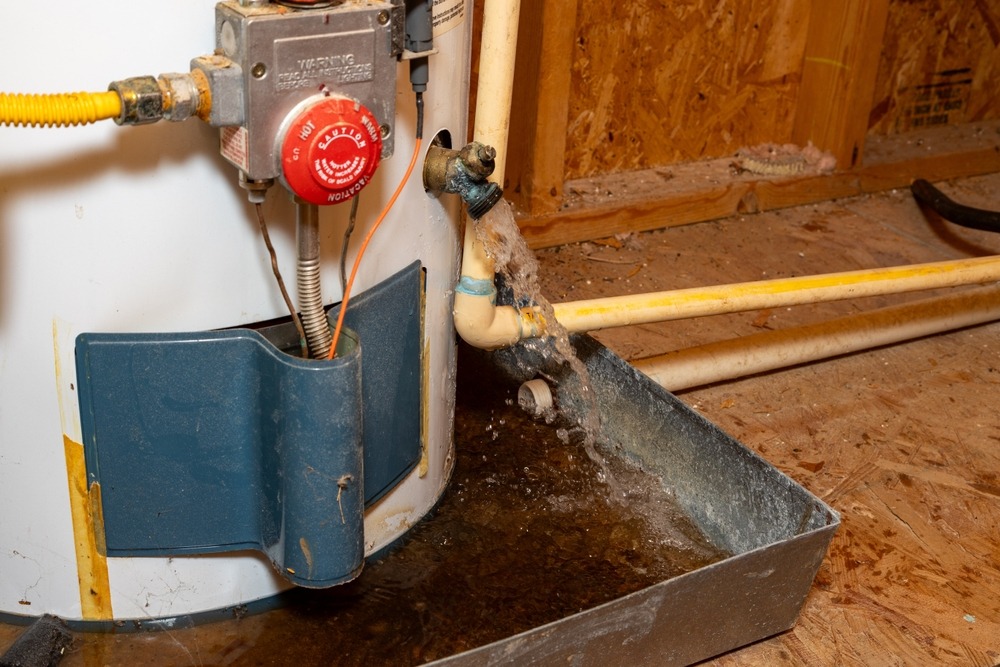Is your water heater running seamlessly? If you haven’t drained it recently, it might not be performing at its best. Many homeowners in Tulsa and beyond overlook this essential maintenance task, but regularly draining your water heater can save you costly repairs, improve efficiency, and ensure a steady supply of hot water.
This blog will explore three key reasons why maintaining your water heater through regular draining is a must. With these insights, you’ll not only extend the life of your appliance but also enhance your home’s overall comfort. At Alert Plumbing Heat & Air, we will share our expertise and provide you with helpful tips to keep your water heater running smoothly.

Why Draining Your Water Heater Matters
Before we jump into the specific benefits, let’s clarify what draining your water heater involves. Over time, sediments like minerals, rust, and debris accumulate at the bottom of your tank. Draining removes this buildup, keeping your system clean and operating efficiently. Experts recommend draining your water heater at least once a year, or more often if you live in an area with hard water like Tulsa, OK.
Failing to drain your water heater can lead to problems like reduced efficiency, shorter appliance lifespan, and even the likelihood of a sudden and costly breakdown. Let’s discuss the top three reasons why you should make this task a priority.
1. Improve Energy Efficiency
When sediment builds up at the bottom of your water heater, it creates a barrier between the heating element and the water. This means your heater has to work much harder to warm the water, consuming a significant amount of extra energy. Over time, this inefficiency can lead to a noticeable spike in your energy bills.
Regularly draining your water heater ensures that the heating mechanism works without obstruction, reducing energy demands and lowering monthly utility costs. Think of it this way – a cleaner tank equals faster heat-up times and less energy wasted. This simple maintenance step can lead to savings you’ll definitely feel in your wallet.
Quick Tip:
If your water heater is taking longer than usual to heat water, or if you hear popping or rumbling sounds coming from the tank, it’s likely time to drain it.
2. Extend the Lifespan of Your Water Heater
Did you know that a well-maintained water heater can last 12-15 years, but without proper care, it might fail as early as 8-10 years? Sediment accumulation not only reduces efficiency but can also cause corrosion inside the tank over time. This wear and tear accelerates the risk of leaks or even a complete system failure.
By flushing your water heater annually, you significantly reduce the chances of internal damage. This can save you from the expense and inconvenience of replacing your heater prematurely, which can cost anywhere from $1,500 to $3,000. By investing just a little time in maintenance, you can protect your equipment and avoid unplanned expenses down the road.
When to Call a Professional:
If your water heater is older or you’ve never drained it before, it may be wise to call a plumbing professional for the first maintenance session. They can assess the condition of your tank and ensure everything is in working order.
3. Ensure a Consistent Hot Water Supply
Nothing derails your day like hopping into the shower only to find there’s no hot water. Sediment buildup at the bottom of your tank can block water flow and reduce the capacity of your heater. This means you’re more likely to run out of hot water quickly, especially during high-demand times, like mornings when the entire family needs a shower.
Draining your water heater prevents this frustrating scenario by restoring the tank’s full capacity. Whether it’s for your morning showers, evening baths, or washing dishes, you’ll enjoy a consistent and steady hot water supply when you perform this annual task.
How to Spot the Signs:
If your water takes longer to heat or runs out mid-shower, this could be a sign that sediment buildup is reducing your tank’s performance.
How to Drain Your Water Heater
Draining your water heater may sound complicated, but it’s relatively straightforward. Here’s a quick overview of how to do it:
- Turn off the power or gas supply to your water heater.
- Wait for the water in the tank to cool down before proceeding.
- Shut off the cold water valve at the top of the tank.
- Attach a garden hose to the drain valve at the bottom of the water heater and direct the other end to a safe drainage area.
- Open the drain valve and turn on a nearby hot water faucet to allow air into the system. This helps the water flow out smoothly.
- Once the tank is empty, turn the cold water valve back on to flush the tank until the water runs clear.
- Close the drain valve, detach the hose, and restore the power or gas supply.
If you’re unsure about any of these steps, don’t hesitate to reach out to a professional plumber.
Final Thoughts
Draining your water heater is a simple maintenance task that reaps significant rewards – better efficiency, a longer appliance lifespan, and uninterrupted hot water for your home. Ignoring this task may result in costly repairs or replacements, but with a little care, you can keep your water heater running smoothly for years to come.
At Alert Plumbing Heat & Air in Tulsa, OK, we’re here to help with all your water heater maintenance needs. Not sure how to drain your heater or need expert advice? Contact us today, and our experienced team will ensure your system is in tip-top shape.
Regular maintenance makes all the difference – why wait? Schedule your water heater servicing with Alert Plumbing Heat & Air today!

